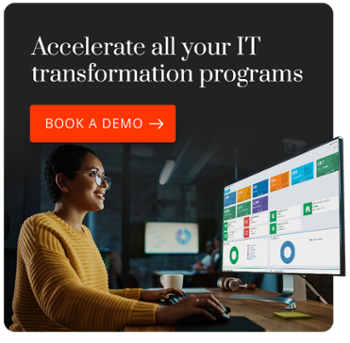A growing emphasis on the end user experience means IT teams need to evolve endpoint management. Manual processes won’t cut it in the world of modern management. It’s time for a rethink.
IT teams have long been charged with delivering a ‘Modern Desktop’ experience. This means providing users with desktops or laptop, running the latest OS and productivity tools that allow them to work anywhere, and maintaining a constant schedule of updates and patches to ensure productivity and data security.
Today’s modern desktop management places a greater emphasis on the end user experience. With a growing number of devices and operating systems and a mix of update schedules to contend with, IT teams need to develop a process of managing them that is seamless and invisible to an ever-more remote workforce.
Why a new approach is needed
2021 was the year of the ‘Great Resignation’. Exacerbated by the pandemic, record numbers left their jobs with the US experiencing 4.5 million resignations in November alone. The Adobe State of Work Report 2021 revealed 49% of respondents would quit if technology was outdated or hard to use.
In early 2021, Gartner identified Total Experience (TX) as a ‘Top Strategic Technology Trend’. It’s perhaps never been so important to provide a high-quality user experience to retain key talent.
The rise of modern management
With a growing number of manufacturer updates and patching schedules to contend with, IT teams must deliver a unified approach to endpoint management, ensuring changes don’t impact end users. Referred to as “modern management,” this approach requires IT to:
-
Ensure new hires can be productive from day one by having the necessary tools in place on day one.
-
Manage a mix of OS update schedules seamlessly without impact to end users.
-
Proactively monitor hardware refresh cycles to ensure desktops are meeting user requirements.
-
Provide intuitive help and self-service capabilities to quickly resolve issues.
IT isn’t a bottomless pit of resources. You’ve got to do all this while optimizing costs and managing requests with the team you have.
The challenges of delivering modern management
Walking this fine line isn’t going to get any easier. Your IT environment is growing in complexity with workloads and applications spread across multiple clouds as well as on-prem. It’s becoming more of a struggle to gain a holistic view to deliver any IT program. Separate management tools don’t interact with each other, so you’re left to manually collect information about your estate and manage tasks including communicating with and scheduling end users for service.
A lack of visibility and manual workflows impact IT’s ability to maintain a unified modern endpoint management approach. For example, delays creep in for:
-
Delivering devices for new hires because IT and HR systems aren’t aligned, which impacts productivity and the user experience.
-
Patching or updating devices, leaving data vulnerable and potentially impacting performance or interrupting end users at critical times with forced updates.
-
Shipping if you don’t have the correct hardware requirements or user location information.
In addition, you run the risks of breaking user access to critical applications if OS updates aren’t tested or issues aren’t identified and resolved ahead of rollouts.
All this can impact new digitalization programs too.
Modern management relies on widespread automation
If you want to seamlessly execute modern management, you need to adopt new technology that can help you get there. That’s where a digital platform conductor comes in.
A digital platform conductor connects to all your data sources and orchestrates your disparate IT management tools within and outside of IT’s control. By doing this it leverages the information and capabilities within them to:
-
Give you a real-time accurate view of your estate and all complex dependencies, updated as changes are made within the source data.
-
See how change will affect your estate and identify readiness paths.
-
Automate repetitive workflows, freeing up resources to tackle strategic initiatives.
How ReadyWorks enables modern management
ReadyWorks is a DPC. It allows you to adopt a more agile approach to modern management by removing all the manual steps from endpoint logistics that cause cost overruns and increase risk for a large-scale deployment. ReadyWorks connects directly to and orchestrates disparate management tools, including ServiceNow, SSCM and InTune to deliver the last mile of service.
With ReadyWorks you can:
-
Streamline application testing by categorizing applications and automating testing and rollout activities.
-
Automate communications triggered by events or dates, including user notifications, follow-up emails and escalations where users don’t respond, shipping notifications and more so you don’t spend hours compiling and sending mails and chasing unresolved issues.
-
Allow end users to self-schedule updates, asset delivery dates, or identify specific hardware requirements, etc. via a self-service portal.
-
Reduce the time and cost associated with any IT transformation program including asset refresh, Windows servicing, application rationalization, patch management, IT Asset Lifecycle Management and ITAD.
Book a demo to see how ReadyWorks can help you cut the time, effort and cost of delivering modern management.

